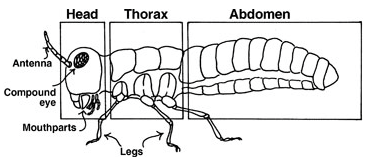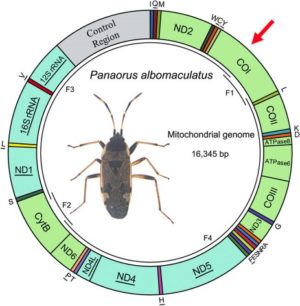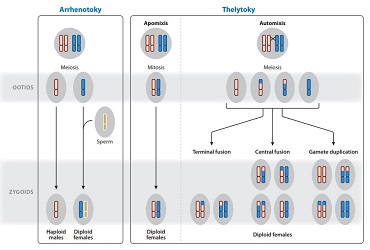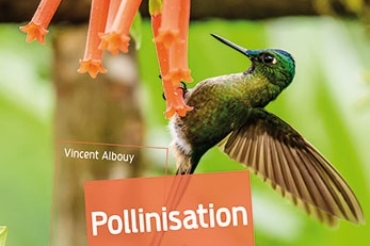The question that comes up when talking about Entomology and insects, is”What is an insect?“.
Not all the little animals around us are insects! Many people, with whom I talk about my passion, integrate spiders and scorpions into insects. That’s why, I wanted to start this blog by giving a definition of an insect and a description that will identify them.
Classification & Morphology
The word insect comes from the Latin”Insectum” which means”cut into sections“. Insects are part of Invertebrates and Arthropods. Arthropods are animals made up of
- of an external skeleton (exoskeleton), segmented and articulated , in chitin (formed of plates called sclerites), it is for this reason that they are named Invertebrates, as opposed to vertebrates that have an internal skeleton like fish, birds or mammals. In insects, this exoskeleton is called Cuticle.
- of a bilateral symmetry (right/left symmetry),
- of a ventral central nervous system, unlike vertebrates that have a dorsal central nervous system (spine),
- from a “cardiac” system to the dorsal position,
caption id=”attachment_973″ align=”alignright” width=”300″] Arthropod phylogenetic tree (Source : Giribet & Edgecombe, 2012)[/caption]
Arthropod phylogenetic tree (Source : Giribet & Edgecombe, 2012)[/caption]
The Invertebrates group, in addition to Arthropods, is composed of the Order of Molluscs (mussels, octopus…), Crustaceans (crabs, shrimps…), Arachnids (spiders, scorpions, millipedes…), Echinoderms (sea urchins, starfish…), among others (see illustration).
A bug is defined and characterized morphologically by a body consisting of (see illustration):
- 3 main parts : tête – thorax – abdomen
- 3 pairs of legs (front, middle and back)
- compound eyes (or ommatidies)
- a pair of antennas on the head
caption id=”attachment_975″ align=”aligncenter” width=”255″] Schéma de la morphologie type d’un insectes (Source : University of Missouri)[/caption]
Schéma de la morphologie type d’un insectes (Source : University of Missouri)[/caption]
Quick description
Appeared on Earth about 420 million years ago, insects evolved in an infinite diversity of shape, color, lifestyle (individual or colony), and adapted to all environments and ecosystems of the planet. They are also the only Invertebrates and Arthropods to have acquired flight.
caption id=”attachment_1003″ align=”alignleft” width=”266″] Number of species of different groups of organisms (Source http://education.francetv.fr)[/caption]
Number of species of different groups of organisms (Source http://education.francetv.fr)[/caption]
Today, nearly a million insect species have been described (much remains to be discovered). This diversity represents more than half of the species known on earth and nearly 90% of animal life!
Insects occur on the entire surface of the globe, in addition to the two poles. They have conquered every environment, from arid deserts to tropical forests and freshwater aquatic environments. Only the oceans seem to be a barrier for insects, where only a few species of chinch bugs grow. The marine environment is dominated by another Order of Arthropods, Crustaceans.
Today, insects are small animals, at most 20-30 cm for some, however, during the Paleozoic (540-250 million years), their size could be much larger. For example, fossils of dragonflies (Odonates) with a wingspan of 75cm have been found. The size of these organisms is related to the level of oxygen present in the atmosphere.
General biology
There are almost as many types of life history as there are species. However, a general rule can be defined. All insects go through 4 stages/phases during their development: 1) oeuf ; 2) larve ; 3) pupe (chrysalis) ; 4) adult (imago).
Because of their exoskeleton (external skeleton), insect larvae cannot grow continuously, they grow in successive stages. At each stage, the insect must change exoskeleton to increase in size. This “skin” change is called mue. According to families, genera and species, but also environmental conditions (food, temperature…), the number of molts and the period between each of them are variable (For more information: ici).
Pupa (or pupae) corresponds to the last larval stage (last molt), it is a transformation phase (called metamorphosis) that allows the transition from larval to adult (imago). Metamorphosis may be complete or incomplete depending on whether there is a total change in morphology between the last larval stage and the adult. Most of the time, the larvae have different morphology, ecology and diet from adults.
The best known case of complete metamorphosis (Holometabolism) is that of the butterfly. The larva corresponds to the larval stage of the butterfly, the pupa or cocoon to the last moult where the metamorphosis takes place, then the adult butterfly ( see illustration on the left).
The locust is a good example of a species at metamorphosis incomplete (Hemimetabolism), the larval stages resemble the adult state, and there is no presence of the pupae stage ( see illustration of right).
For more information on metamorphosis, follow this link.
caption id=”attachment_985″ align=”alignleft” width=”294″] Butterfly development cycle (Source University of Arizona)[/caption]
Butterfly development cycle (Source University of Arizona)[/caption]

Recommendation of books on this theme:
– Insects in 300 questions/answers
– Entomology dictionary : Anatomy, systematics, biology
– Phylogenetic classification of life
– Phlogenetic classification of living vol.2





